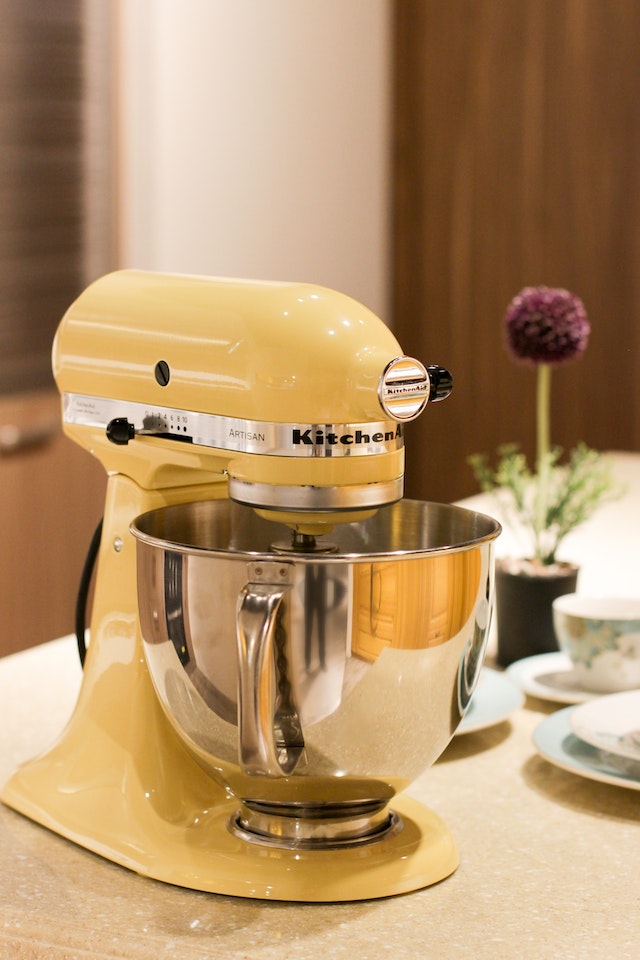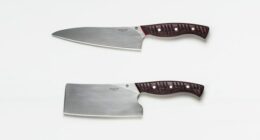Tilt head mixers are more compact, easier to clean, and allow for easy access to the mixing bowl. Bowl lift mixers are larger and more powerful than tilt head models. They are better suited for heavy-duty tasks such as kneading bread dough or making large batches of batter or frosting.
What is a tilt head mixer?
(Photo by Rumman Amin on Unsplash )

A tilt head mixer is a type of stand mixer that features a tilting head design. This allows the mixing bowl to be easily removed and replaced, making it convenient for adding ingredients or cleaning up after use.
Tilt head mixers typically have a smaller footprint than their bowl lift counterparts, making them ideal for kitchens with limited counter space. They also come in a wide variety of sizes and colors to suit any kitchen décor.
One advantage of tilt head mixers is that they are generally more affordable than bowl lift models. They can be purchased at various price points depending on the brand, size, and features included.
However, there are some downsides to consider as well. Tilt head mixers may not be as sturdy as their bowl lift counterparts due to their lighter weight construction. Additionally, the tilting mechanism can wear out over time if used frequently.
If you’re looking for an affordable and versatile stand mixer option that’s great for everyday home use, a tilt head model might be just what you need!
What is a bowl lift mixer?
(Photo by Pavel Danilyuk)

A bowl lift mixer is a type of stand mixer where the mixing bowl is lifted up and down by an adjustable arm. This design is commonly used in commercial kitchens, but it has also gained popularity among home bakers who require a more powerful and durable machine for their baking needs.
The main advantage of a bowl lift mixer is its power. These mixers typically have stronger motors than tilt head mixers, making them ideal for heavy-duty tasks such as kneading bread dough or whipping large amounts of cream. The bowl lift design also allows for better stability during these tough jobs.
Another benefit of the bowl lift design is that it makes it easier to add ingredients while the mixer is running. With the tilting head model, you need to stop the machine every time you want to add something new. But with a bowl lift model, you can simply raise or lower the mixing bowl as needed without stopping your work.
However, there are some downsides to using a bowl lift mixer. One major drawback is that they tend to be heavier and bulkier than tilt-head models, which can make them difficult to move around or store when not in use. They also tend to be pricier than tilt-head mixers due to their higher power output and sturdier construction.
If you’re looking for a powerful and efficient stand mixer that can handle heavy-duty tasks with ease and precision, then consider investing in a reliable and sturdy bowl-lift model!
The advantages and disadvantages of a tilt head mixer?
Tilt head mixers have become a popular choice among bakers and home cooks alike. Here are some advantages of using a tilt head mixer:
Firstly, they are easy to use due to their convenient design. The head can be tilted backwards, making it simple to attach or remove the mixing bowl and attachments.
Secondly, they take up less space compared to bowl lift mixers as they are typically smaller in size and easier to store.
Thirdly, the ingredients inside the bowl can be easily accessed during mixing without having to stop the machine altogether.
On the other hand, there are also some disadvantages of using a tilt head mixer:
The first disadvantage is that they may not be suitable for heavy-duty tasks such as kneading dough for bread or pasta. This is because tilting can cause vibrations and wobbling which could affect its stability.
Another disadvantage is that when adding ingredients while mixing it might result in splatters outside of the bowl since it has no splash guard like most bowl lift models do.
These mixers tend to have lower power than professional stand mixers making them not ideal for intense cake decorating labor or large batches of doughs.
If you need an affordable and versatile kitchenaid mixer then go with a tilt-head model!
The advantages and disadvantages of a bowl lift mixer?
Bowl lift mixers have a unique design that sets them apart from tilt head mixers. They are powerful appliances, specifically designed to handle large quantities of heavy dough and batter. However, just like any other appliance, they come with their own set of advantages and disadvantages.
One of the main benefits of bowl lift mixers is their power. These machines are built to handle tough jobs that require lots of torque, making them ideal for bread doughs or thick batters. Bowl lift mixers also tend to have more attachments available than tilt head models – including pasta rollers, spiralizers and grinders – which can make them very versatile in the kitchen.
On the downside, bowl lift models tend to be bulkier than tilt-head ones which means they take up more space on your countertop or storage cupboard. The higher price tag may also be a disadvantage for some people who don’t regularly bake with heavy-duty ingredients or need all the extra attachments.
Another drawback is that bowl-lift models can sometimes struggle when it comes to smaller batches because there’s often too much clearance between the bottom of the mixer’s whisk attachment and whatever you’re trying to blend. This may lead to uneven mixing results if you’re not careful.
If you’re someone who regularly bakes bread or works with dense doughs – then a bowl-lift mixer might be worth investing in as its power will help get those jobs done with ease!
Which is better for dough food processor or mixer?
When it comes to making dough, both food processors and mixers can do the job. However, there are a few key differences between the two that may make one better suited for your needs.
A food processor is typically designed for chopping and mixing ingredients together quickly. While it can handle small amounts of dough, larger batches may cause strain on the motor and lead to overheating. Additionally, the blade in a food processor isn’t ideal for kneading dough as it tends to cut through rather than stretch and fold.
On the other hand, stand mixers are specifically designed for baking tasks like mixing doughs or batters. The powerful motor in a mixer allows you to easily knead even thick or heavy bread dough without straining the machine too much. Mixers also come with specialized attachments like dough hooks that help work gluten strands efficiently.
Ultimately, whether you choose a mixer or a food processor for your dough-making needs will depend on how often you plan on using it and what kind of recipes you’ll be making most frequently.
What is the difference between tilting drum mixer and pan mixer?
Tilting drum mixers and pan mixers are both used for mixing various materials, including concrete, mortar, and other construction materials. A tilting drum mixer is designed with a large open space or drum that can be tilted to pour out the mixed material. On the other hand, a pan mixer has a flat bottom and vertical sides with blades in the center of it.
One major difference between these two types of mixers is their capacity. Tilting drum mixers usually have larger capacities than pan mixers, making them ideal for bigger projects where more quantity needs to be mixed at once. Pan mixers are generally smaller in size and suitable for small jobs like mixing drywall mud or plaster.
Another notable difference between these two types of equipment is how they operate. Tilting drum mixers use gravity to move materials through the rotating drums while pan mixers make use of centrifugal force created by spinning blades which pull material towards its walls.
Whether you opt for a tilting drum mixer or a pan mixer depends on your specific needs as each one comes with its unique advantages and disadvantages regarding capacity, efficiency, ease-of-use among others factors that should be taken into account when choosing what suits your project best.
Featured Image By – Photo by david yohanes









